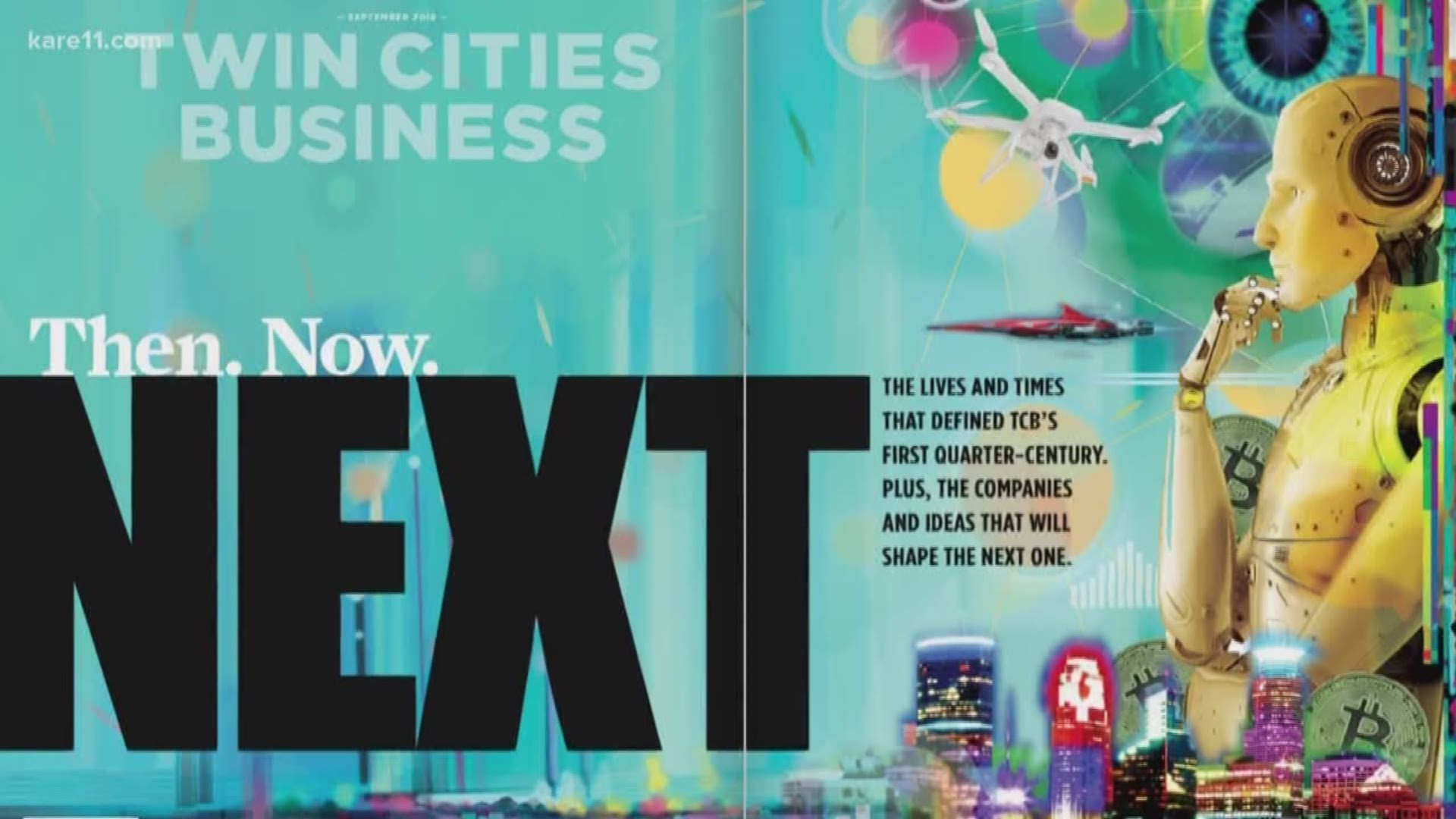MINNEAPOLIS - Twenty-five years of covers for Twin Cities Business, all leading to this one.
"Then, Now, Next. That's our cover and that is really the theme of the month, and I think you have to look back to look ahead," said Allison Kaplan, the Editor-in-Chief of Twin Cities Business magazine.
TCB is celebrating its 25th anniversary this month with a special issue exploring Minnesota's important leaders and achievements of the past, while also examining 25 companies and trends awaiting us in the future.
So, what does the "Next" in "Then. Now. Next." look like?
We'll focus on five things.
Number one: Anytime Fitness, out of Woodbury. The company just opened its 4,000th location this year and is on track to hit 5,000 within two years. That's nearly two a day. Anytime Fitness is the second-fastest growing franchise company in the world (after Subway).
"They're very low maintenance. You know, there's very little human involvement, they're open 24/7. It's really about giving the consumer what they want, when they want. On demand is a big trend that you see throughout industries," said Kaplan.
Yeah, like health care.
Number two: It's brand-new, booming, Minneapolis-based Bind, which just raised $70 million in funding to expand outside of Minnesota and Wisconsin.
"This is on-demand, employer-sponsored health insurance. So, it allows you to pick what you need, when you need it to keep premiums down," said Kaplan.
Can't keep soccer down anymore.
The MLS has experienced a 27 percent rise in interest since 2012, with TV audiences and online interactions up, according to Nielsen.
At number three: It's Minnesota United FC and its new St. Paul Stadium.
"Really has potential to change that whole neighborhood. To bring more opportunities, to bring more business, to bring more residential, to bring everything to that Midway area," said Kaplan.
Thing is, where's everybody going to live?
The Met Council estimates the Twin Cities metro will hit nearly 4 million people by 2040, doubling the population of 1970.
At number four: It's housing.
"Exactly! Where do they go?" asked Kaplan. "I think they go up! That's where they go. We're looking at four-plexes and six-plexes and then the issue becomes, do those multi-use units fit into neighborhoods?"
And, lastly: Who's going to build it all and at what cost?
The National Association of Homebuilders just released a survey saying only 3 percent of 18- to 25-year-olds had interest in building trades or manual labor.
"Nobody wants to do it. We're raising a generation of people who expect to be at computers or in offices, and who is going to be doing that work and what is it going to cost to get it done?" said Kaplan.

